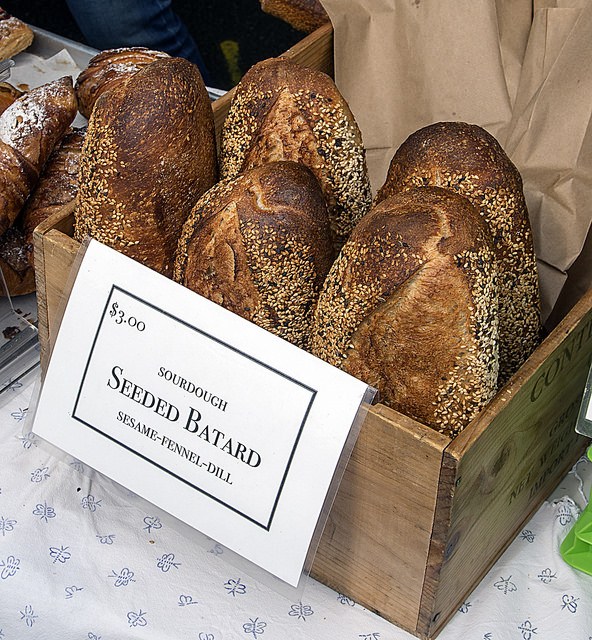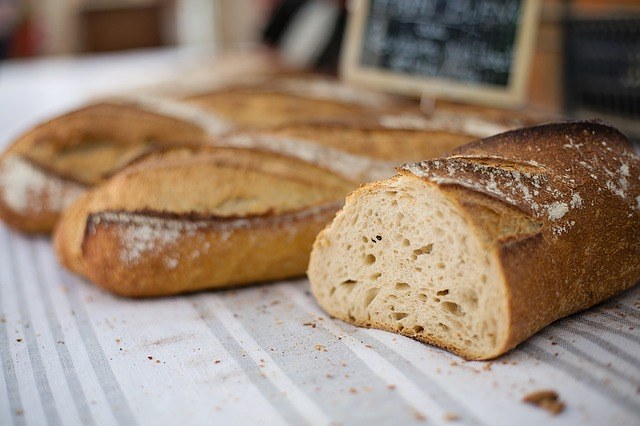What is batard bread?
Batard bread gets its unique name from how this kind of recipe is generally considered “inferior” to a traditional baguette.
Don’t let the odd name fool you, however. Despite the quirky moniker, batard bread is actually a delicious variant of the baguette that can add fantastic functionality and flavor to your meal.
Want to try it for yourself?
Here we share the best batard bread recipe for making it at home, along with some fun facts to make you a batard expert.
What Is Batard Bread?
Batard bread is a form of French bread that gets its name because it is wider than the traditional baguette.
The word “batard” means “bastard” or “half-bred,” so this type of bread is often nicknamed as such for its supposed inferiority to the standard baguette.
However, despite this unflattering name, batard bread still has plenty to offer if you’re looking for a fluffy loaf with plenty of flavor at your next meal.
What Does Batard Bread Taste Like?
Thanks to the fact that batard dough includes both yeast and baking powder, this style of French baking produces much lighter loaves than their more famous counterparts.
This means that batard bread has a milder flavor than the traditional baguette, which is often described as having a more nutty taste.
As opposed to what you might expect, however, batard bread actually has much less of a crisp crust than the standard baguette.
This results in batards that are crunchy on the outside but softer inside; some people even describe this type of French baking as akin to eating warm dough rather than having it’s usual crispy exterior.
How Does Batard Bread Differ From a Traditional Baguette?

Traditional baguettes are very long, generally over a foot, and thin in width. In contrast, batard bread is half the length but much wider, usually about 4-6 inches.
It has a thick, crunchy crust and a soft, doughy inside, which makes it perfect for sandwiches, garlic bread, or sliced as a side for a meal.
If you prefer slightly softer baguettes, batard bread is a fantastic way to get that very French taste without the hardness of traditional baguettes.
As an added bonus, it’s much less time-consuming to make!
How Do You Make Batard Bread?
There are several varieties of dough you can use to make batard bread.
Sticking with the classic French bread dough or branching out into whole-grain doughs, if you want a healthier option, are all within your reach.
However, no matter which flavor you choose, it’s key to remember rising time.
We don’t a mean thirty minutes or so; plan on at least 3-5 hours just for that portion of the bread making process.

During this time, the dough will develop air pockets. The smaller air pockets are what make the dough inside the baguette airy and asymmetrical once it’s baked.
The trademark aspect of batard bread is the large, irregular holes inside of the loaf, so you will want to avoid squeezing it too much.
Once your dough is made, you will need to shape it. This is pretty easy, but we’ve included a few tips in our recipe to guide you through it.
A Delicious Batard Bread Recipe
Ingredients (Makes About 2 Loaves)
Here is what you’ll need to get started:
- 1 ½ cups lukewarm water
- 3 ½ cups bread flour
- 2 tsp active yeast
- 2 tsp salt
The Best Flour for Batard Bread
Deciding which is the best flour for batard bread will go a long way in determining the overall quality of your loaf.
You can’t go wrong with a bag of King Arthur Organic Bread Flour, one of our favorite flours for this type of recipe:
Another good option is Bob’s Red Mill Artisan Bread Flour.
Tip: You can learn more about selecting the best flour for your recipe in our guide to the best bread machine flours.
Directions for the Batard Bread Dough
- Combine yeast and 1 ½ cup of lukewarm water in a large bowl. (You’ll be adding the flour and salt to this same bowl at a later step, so you’ll want to make sure it is big enough to fit all the ingredients.) Ensure that the water is warm enough to activate the yeast – at about 100°F. The yeast should dissolve on its own, but make sure to double check the instructions on the container it came in.
- Combine the salt and flour, then add them both to the water-yeast mixture. Stir the flour in until it’s well incorporated.
- Once incorporated, knead it for a few minutes either by hand or with a mixer, until the dough takes on a kind of bouncy quality. If you can press your finger into the dough and it bounces back, you’ve captured the right consistency.
- Cover the bowl loosely and let the dough rise at room temperature. As we mentioned above, you will need about 3-5 hours, until it is triple the size of your original ball.

Directions for Pre-Shaping Prep
- Dust your counter top with a bit of flour, but be careful to not use too much. You can also coat your fingers in a thin layer of flour to prevent the dough from sticking as you work with it.
- Place your dough on the floured area. It may have developed large bubbles during the rising time, and these bubbles are okay to pop. After you’ve done so, gently flatten the dough and let the air out of any other large bubbles that have formed.
- Cut the dough into two equally-sized pieces.
Directions for Shaping the Batard Bread Dough
- Shaping the dough can be slightly tricky. First, you will want to mold it into a slightly oblong shape. Remember, it should be smaller than a foot, so don’t stretch the dough beyond that length.
- Turn the dough over to the “rough” edge and then fold the sides of the dough inward, so they make a trench in the middle.
- Once that is done, you can roll the dough back and forth to even it out. Then make sure the ends of our dough are also evenly rounded.
Here’s a video showing how to shape batard bread.
Directions for Baking Batard Bread
- Now allow the dough to rise for 30 more minutes. While it does, preheat your oven to 450°F.
- Place parchment paper on a baking sheet and lightly dust it with flour, then place the shaped dough on the sheet. Slash the top of the dough three times with a knife to get that classic baguette look and spray the top of the dough with water. Cook the bread for about 20 minutes et voila! You’ve got batard bread.
Have you tried making your own batard bread?


